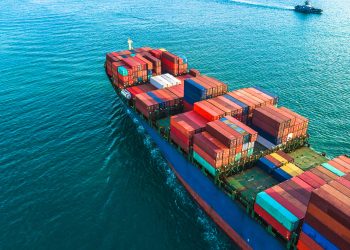Shipbroker Braemar Seascope trend is at least five years old
 Container ship operators are ordering ever larger vessels even in the face of a weak freight and time charter environment during 2011, according to Braemar Seascope. The London-based shipbroker says in statement: “This may appear to be counter-intuitive. In fact, it reinforces a trend that is at least five years old.”
Container ship operators are ordering ever larger vessels even in the face of a weak freight and time charter environment during 2011, according to Braemar Seascope. The London-based shipbroker says in statement: “This may appear to be counter-intuitive. In fact, it reinforces a trend that is at least five years old.”
Braemar Seascope notes that containership operators cannot control freight rates, especially in a post-liner conference competitive environment. They can however control the unit cost of shipping each TEU through economy of scale. Ordering ever larger containerships is a direct consequence of this cost management.
During the recent Containerisation International Mediterranean Freight Conference held in Istanbul, Braemar Seascope Research Manager Mark Williams highlighted the strong correlation between the price of bunker fuel oil – the largest single cost per TEU movement – and the average size of containerships ordered over the past 10 years.
The strength of the relationship is confirmed by the fall in bunker prices and average TEU capacity of newbuildings ordered in 2009, though of course the ships ordered in 2009 will likely be delivering into a higher bunker price environment in 2012 and later.
The trend cannot carry on for ever, though. Braemar Seascope says: “If bunker prices continue to rise, there will eventually come a point at which naval architects will find it harder to build bigger ships. The Malaccamax concept appears to be the maximum size for Asia-Europe trades and port operators will find it harder to continually upgrade facilities. The new eco-designs for containerships will become ever more important in liner companies’ cost management strategies.”
In the meantime ports are are having to adapt to cope with very large containerships. APM Terminals Vice President and Chief Financial Officer Christian Moller Laursen described the prospect of global port container throughput, currently around 600 million TEU, doubling within 15 years, and the aggressive investment on the part of shipping lines in vessels of 10,000 TEU capacity and over. Speaking at the recent Port Finance International Conference in London he said port and terminal operations face looming challenges in both capacity and productivity.
Source: World Bunkering





























































